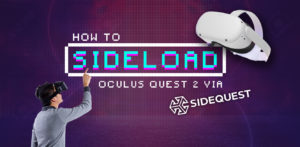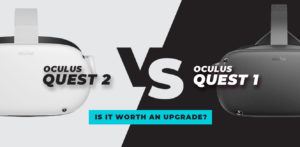Table of Contents
With so many new headsets on the market and more coming out regularly, it can be hard to know what’s good, what’s bad, and also what’s good value for money.
Sure, dropping thousands on a headset may get you the best of the best but some better-value headsets may suit your needs perfectly. Add to that, other items like PCs or consoles may be needed to get your headset to work, and it can all be a bit of a confusing mess. When you think about barriers to entry it can be difficult to surmise exactly how much a VR headset can cost.
Well, luckily we’re here to help you out. We’ve compiled a list of current headsets on the market and covered any hidden costs or barriers to entry along with the headset’s performance, quality, and price. So if you’re wondering how expensive are VR headsets, we’ve got you covered.
We’ve split the list into three main categories: One for stand-alone headsets (works out of the box), one for console-based headsets (needs required console to connect to), and lastly, one for PC headsets (needs a modern gaming PC to connect to). We will also throw in some recommended items where applicable to make your VR experience more worthwhile. Let’s get into it!
Meta Quest 2 (Stand-Alone)

Screenshot from Project Cambria Preview – Mixed Reality with Presence Platform by Meta Quest
The Quest 2 is currently the most popular headset on the market with just under 15 million units sold worldwide at the time of writing. The reason it’s so popular is most definitely down to two winning factors. First, it has no barrier to entry. You can buy your Quest 2, switch it on and start playing straight away. No connections to phones, PCs, or consoles are needed it works on its own. The second winning factor is price.
Recently, Meta increased their prices on the headset by a whopping $100, which is unheard of but they are still one of the most affordable brands on the market to date.
The headsets come in two variations: the 128GB and 256GB models. There are no other differences between the two models except for storage capacity. They currently retail for $399.99 and $499.99 respectively. They also occasionally bundle with the very popular game Beat Saber. Beat Saber is a great title but doesn’t excuse the $100 price hike as we used to be able to get these headsets much cheaper.
Pricing aside, this is still an amazing and affordable piece of kit. The stats and massive library of games through the Oculus Store make it almost a must-have item. See the stats below:
- Optics Fresnel lenses
- IPD Range
- 58-68 mm hardware adjustable (manual)
- 3 fixed IPD settings: 58mm, 63mm, 68mm
- Adjustable Diopter
- Passthrough
- Grayscale via tracking cameras
- Display Type Single Fast switch LCD binocular
- Subpixel Layout RGB stripe 3 subpixels per pixel
- Peak Brightness 100 nits
- Resolution 1832×1920 per-eye
- Refresh Rate 120 Hz
- Visible FoV 97° horizontal 93° vertical
- FoV ranges between 85° and 97° depending on IPD
- Dimensions 191.5 x 102 x 142.5 mm excluding head strap
- Weight 503 g with a head strap
- Material Plastic, foam facial interface
- Head strap Flexible fabric strap
- Colors White
- Tracking Type 6 DoF Inside-out via 4 integrated cameras
- Tracking Frequency 1000 Hz
- Tracking cameras: 60 Hz
The Meta Quest 2 is truly a remarkable piece of kit that is great value for money. The GPU is not as powerful as what you’ll find in your PC but the gameplay and resolution are still remarkable. If you want some extra power there are ways to link to your PC but that is not something we’ll get into here.
Hidden costs: As great as the headset is, you are very likely to want to swap out the head strap as soon as possible. Sure it’s serviceable for small play sessions but the weight on your face is uncomfortable. Also, the battery life isn’t great so long play sessions are not possible beyond the 3 to 4-hour mark.
Solution: The BoBoVR M2 Pro strap and battery pack. This high-quality strap combined with the back weight of the added battery pack takes all the pressure off the front of your face. The extra padding makes it super comfortable to wear and with the quick snap-on, the snap-off battery is easy to charge and swap on or off for extra juice when needed. The BoBoVR M2 Pro will set you back around $70 and is well worth the investment. There are similar brands available with varying quality but for us, the Bobo hits the perfect balance of quality and affordability.
A new strap isn’t vital for early use but it is a future investment you’ll need to make for longer gaming sessions!
Pico 4 (Stand-Alone) – One of The Cheapest VR Headsets
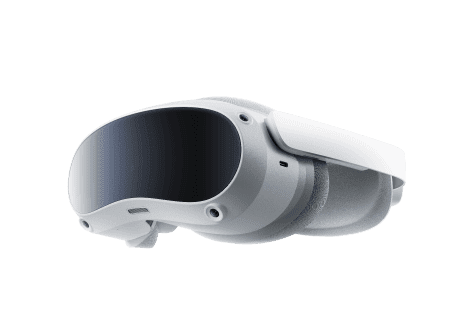
Photo credit: https://www.picoxr.com/
Currently on sale in Europe and Asia and coming very soon to the USA, the Pico 4 is Meta’s main rival in the VR space at the moment. Offering high-end specs in a stand-alone unit at affordable prices makes it one to look out for. Price wise it has the Quest 2 matched as its 128GB model sells for 429EUR and its 256GB sells for 499GB. But the Pico 4 is a newer headset so we gain a lot of extra benefits over the Quest 2.
The first noticeable improvement over its rival is the form factor. The Pico uses pancake lens technology with means it’s a much smaller, lighter, and better-looking unit overall. The battery is also built into to rear strap allowing equal weight distribution. This means a much more comfortable and lighter fit for longer play sessions. The built-in cameras are also improved with color pass-through being possible on the Pico 4. This makes AR games or working on your laptop possible while wearing the helmet.
The field of view is also larger on the Pico 4 than on the Quest 2. This means you don’t suffer that goggle effect when wearing the headset. The edges of the lens are not as noticeable in your peripheral vision.
The headset also has motorized IPD adjustments that allow you to get the best clarity of image based on the distance between your eyes. The Quest 2 only had three clickable adjustments whereas the Pico 4 has more tailored adjustments that are controlled from in menu settings.
The spec sheet for the Pico 4 is also impressive. Let’s take a look :
- 5300 mAh high-capacity battery
- Qualcomm Snapdragon XR2 processor
- Adreno 650 graphics processing unit (GPU) and 8 GB of RAM
- Ultrawide pancake optics with a 105-degree field of view (FoV)
- Color passthrough mixed reality (MR) visuals
- Motorized Interpupillary Distance adjustments of 62-72 millimeters
- 4K+ Super-Vision Display of 4320 x 2160
- 6 degrees of freedom (DoF) with submillimeter positioning and millimeter tracking accuracy
- High-Fidelity spatial audio
- HyperSense haptic controllers with vibrations from 50Hz to 500Hz
- Weight 295 g without the head strap
- 586 g with the head strap
- Material Plastic, foam facial interface
- Head strap, Hard padded, retractable strap
- Colors white/grey
The same GPU, and in general a very similar experience can be found on both the Pico 4 and the Meta Quest 2. One thing worth noting is that the Oculus store and navigation menu are far more established than Pico’s. It feels a little basic and bare bones when navigating.
Hidden Cost: This is where for me the Pico 4 shines. Unlike the Quest 2, Pico is smaller, lighter, and more comfortable to wear so there is no need to make extra purchases. Out of the box, you will get many hours of gameplay with little to no fuss so that’s a huge bonus.
With no extra costs and no downgrades in quality (the opposite in fact), the Pico 4 is the clear stand-alone headset champion. If you already own a Quest 2, there is perhaps not enough here to compel you to buy a new headset however if you’re buying for the first time or you’re looking to replace an old headset, then the Pico 4 is the only clear choice for a stand-alone headset!
PSVR (Console VR)
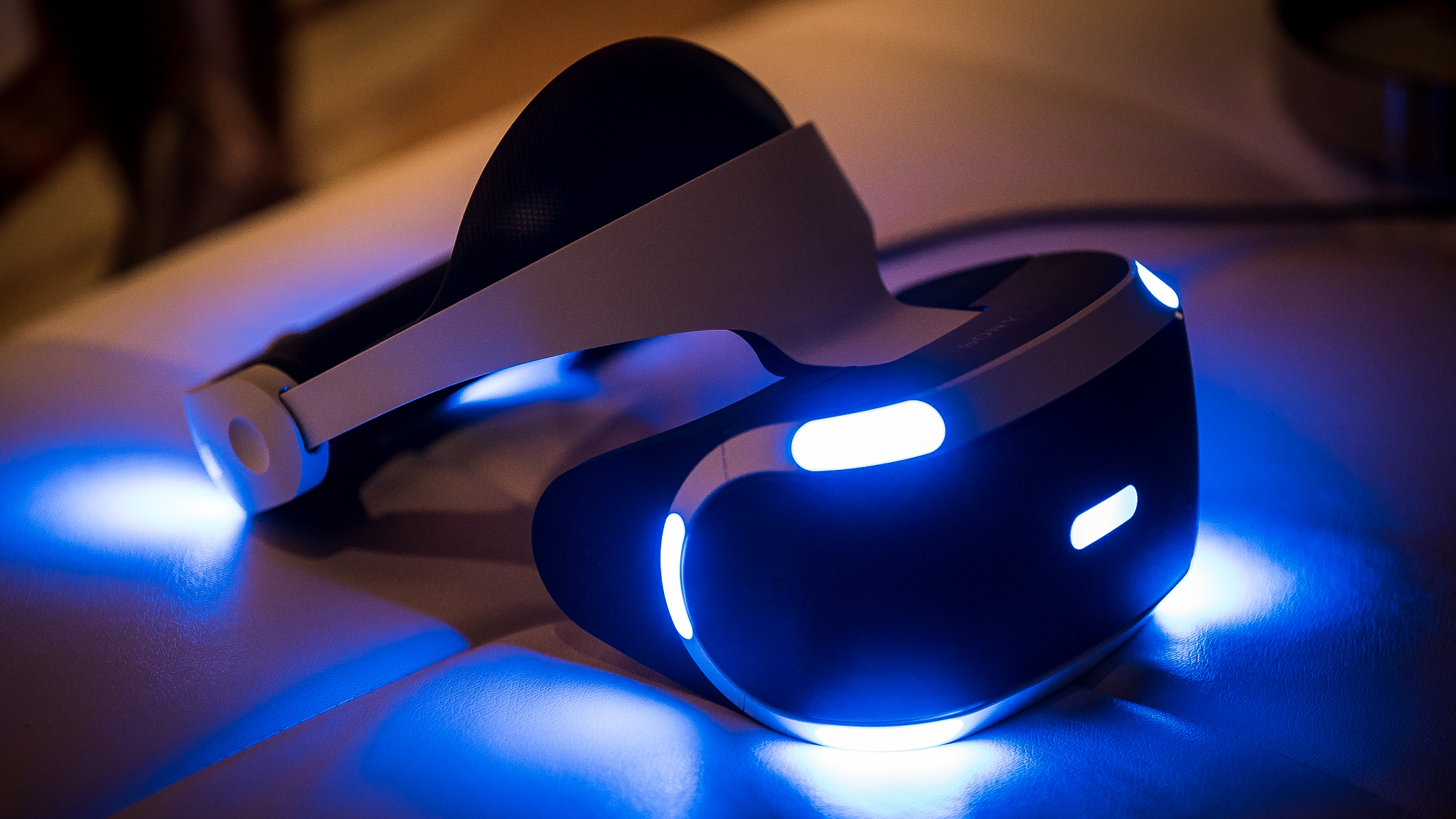
Photo credit: lain https://www.flickr.com/photos/iainstars/31100256215
Sony has been one of the only console makers brave enough to enter the Virtual Reality space which is unfortunate. The PSVR went on sale in 2016, and it is now certainly showing its age. It offers one of the weakest VR experiences on this list however the price is still tempting for new users. Add to that the fact that many buyers will already own either a PS4, PS4 Pro, or PS5, and the barrier to entry seems easy to overcome for many.
No need for an expensive PC to get up and running here! Sony also takes advantage of old peripherals which is both a blessing and a curse. If you happen to own the PS4 camera and the old PS3 move controllers from 2010 then you can dust them off and use them. Might sound like a reach to expect people to own gear that’s over 10 years old, but I was one of those people!
I kept all my old PS3 gear and was able to jump right in with the move controllers. However, using old tech causes many restrictions. The move controllers have no analog joysticks which can make movement in VR quite problematic. Teleportation and or button mapping movement can skirt around the issues but nothing offers the same immersion as simply pushing a stick forward. Sure, you can use a joypad but you lose all that one-to-one hand movement so neither solution offers the great VR experience we have on other devices.
Add to this the narrow vision cone of the front-facing camera and you’ll find you are constantly being pulled out of your immersive experience. There are no 360-degree movement options here, even twisting your head too far can cause the camera to lose track, which is janky and awkward.
Tech specs aren’t overly impressive either. OLED lens gives a resolution of 960×1080 per eye and a refresh rate of 90Hz which is bumped up to 120Hz through interpolation (I don’t know what that means either!).
The overall experience is quite blurry especially when trying to view anything in the distance. The screen door effect and goggle visuals due to the low field of view also hampers the experience. The processing power gets bumped a bit if you use a PS4 Pro or PS5 rather than the base PS4 which is nice. This adds a little more detail and clarity to the overall image quality.
All of the above may sound like I am ragging on PSVR, but that’s not the case. If this is your first VR experience you will still be very impressed and it definitely can offer a lot of fun at a good price. Sony also invested in gaming for the unit which means some of the greatest VR titles have been Sony-only or timed exclusives.
They don’t have the vast libraries to match Oculus or Steam but they do have some really good quality titles such as Resident Evil 7, Resident Evil Village, Firewall: Zero Hour, Blood & Truth, and Rush of Blood to name but a few. So if you don’t have a PC but do own a PS4 or PS5, you might consider picking up PSVR. I’d rather have a Pico 4 or Quest 2 as the PSVR is too dated compared to these two.
Pros
- Great Price (around $300 which includes bundles)
- Can reuse old equipment
- Good library of quality games
- No PC needed
Cons
- Limited hardware
- Old equipment is restrictive
- Low resolution and screen door effect
- Need PS4 or above to run
PSVR2 (Console VR)
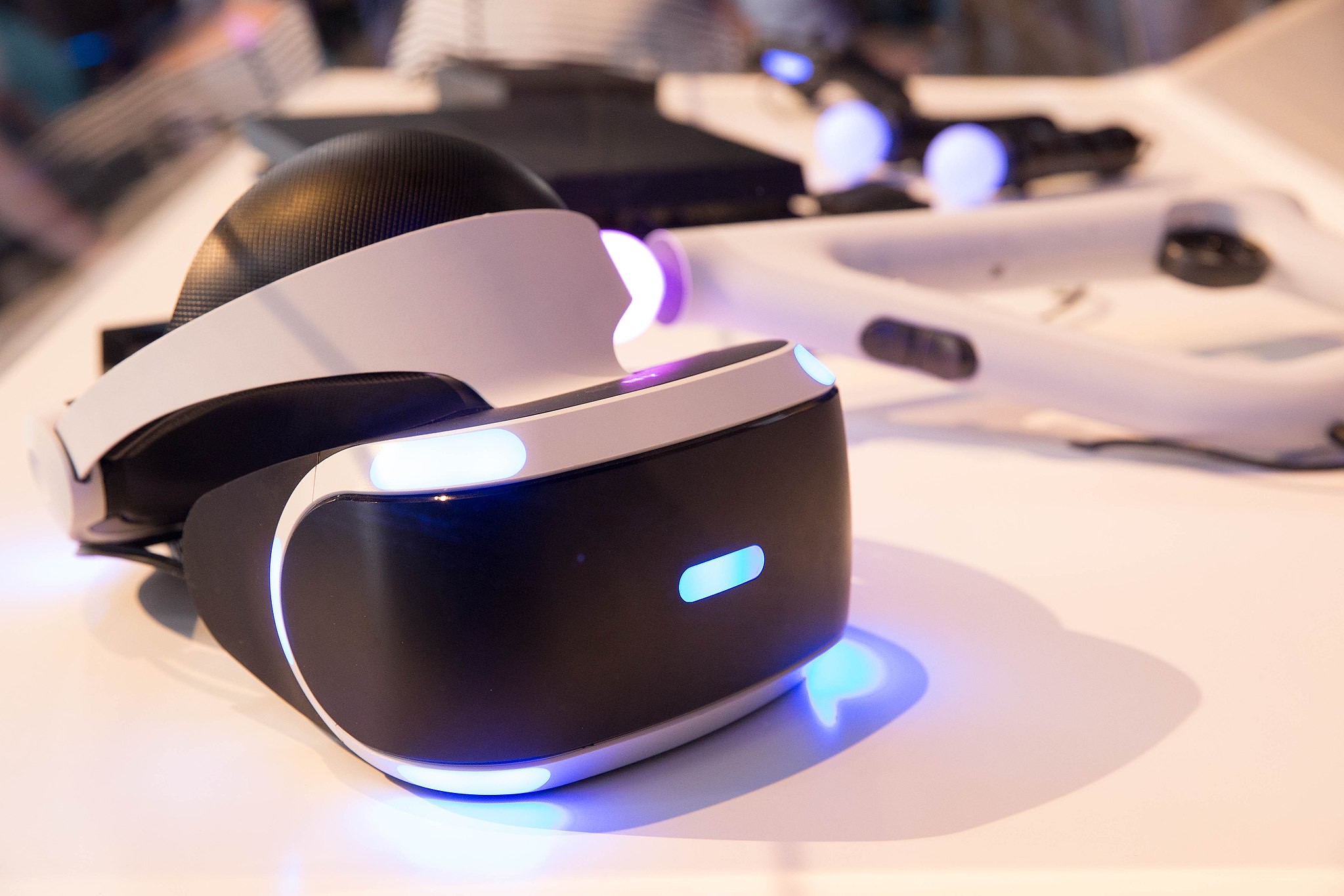
Photo credit: GPA Photo Archive https://www.flickr.com/photos/iip-photo-archive/37695674255
Okay, so this is cheating a little as it’s currently not out yet. Due to launch in early 2023 though so we do have a lot of confirmed information. One thing missing though that is important to everyone is the price. Sony has not yet confirmed how much it will cost so for now it’s impossible to fully recommend. That is out of the way though, let’s cover some of the confirmed things you can expect if you invested in buying a day one PSVR2 whatever the cost!
Firstly, let’s talk about the controllers. Sony has not only solved their traversal issues from their last VR headset but vastly improved on what’s out there to date. Take a look:
Adaptive Triggers
Each VR controller (Left and Right) includes an adaptive trigger button that adds palpable tension when pressed, similar to what’s found in the DualSense controller. If you’ve played a PS5 game, you’ll be familiar with the tension in the L2 or R2 buttons when you press them, such as when you’re drawing your bow to fire an arrow. When you take that kind of mechanic and apply it to VR, the experience is amplified to the next level.
Haptic Feedback
Following the success of the PS5 controller, the new VR controller will have haptic feedback optimized for its design, making each interaction and sensation in games feel more realistic and specific to what’s happening on screen. In Sony’s own words, “When you’re traversing through a rocky desert or trading blows in melee combat, you’ll feel the difference, magnifying the extraordinary visual and audio experience that’s so central to VR.”
Judging by the technology they’ve pumped into the PS5 controller it’s safe to say we can expect great things from the haptic feedback here.
Finger Touch Detection
Similar to the Meta touch controllers, the thumb sticks have built-in sensors to pick up even the lightest touch of your thumb resting on top of them. The controller can detect your fingers without any pressing in the areas where you place your thumb, index, or middle fingers. This gives you the ability to make more gestures with your hands during gameplay. Again, this seems like a direct copy of the Meta touch controllers, but it’s a welcome addition.
Tracking
The halo ring on each controller allows for accurate tracking between the controllers and the cameras built into the headset. This should allow for near one-to-one hand tracking and lead to better immersion during gameplay. No more loss of tracking when you turn your back away from the camera sticking to the top of your television!
Action Buttons/Analog Sticks
Quoted from Sony’s official press release earlier in 2022. The Left controller contains one analog stick, the triangle, and square buttons, a “grip” button (L1), a trigger button (L2), and Create button.
The Right controller contains one analog stick, the cross and circle buttons, a “grip” button (R1), a trigger button (R2), and Options button. The “grip” button can be used to pick up in-game objects, as one example. This sounds perfect as it’s taking the well-known form factor of the PS4/PS5 controller layout and splitting it into two.
Apart from the controllers, the overall specs for the headset also look very impressive and hopefully future-proof for many years:
- Display Type: Fresnel OLED screens
- Resolution: 4K HDR, 2000 x 2040 per eye
- Field of View: 110 degrees
- Refresh rate: 90 Hz, 120 Hz
- FSR: Flexible scaling resolution concentrates rendering resources on the player’s area of focus
- Eye tracking: Yes, new technology
- Haptics in Headset: Yes, reacts during gameplay
These are some pretty impressive stats, to say the least! To put them in some context for the no anorak wearing gamers among us … the Quest 2 is one of the most popular and impressive headsets on the market to date. The PSVR2 beats it on every level based on these stats. However, I need to stress the point that without a confirmed price, it’s very difficult to recommend the PSVR2 yet. Here’s hoping we know more soon!
Oculus Rift S (PCVR)
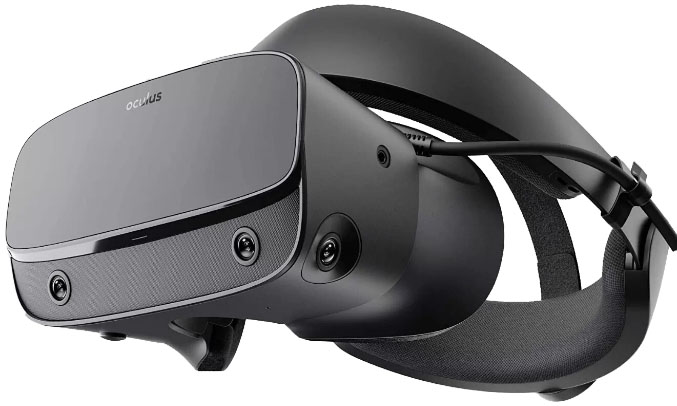
Not as powerful or impressive as the HTC Vive but also comes at a far more reasonable price, the Rift S although quite dated, provides very high-quality VR gaming and is the best value-for-money kit on this list. Offering inside-out tracking and incredible touch controllers the Rift S helped drag the VR industry forward in leaps and bounds when it first launched in 2019. As long as you have a fairly mid-range to new PC and you don’t mind buying second-hand, you would be foolish to ignore the Oculus Rift S especially as it’s quite easy to find one cheap online these days.
Minimum OS: 64-bit Windows 10. CPU: Intel Core i3-6100 / AMD Ryzen 3 1200, FX4350 or greater.
RAM: 8GB. GPU: NVIDIA GeForce GTX 1050Ti / Radeon RX 470 or greater. GPU RAM: 8GB.
No need for podiums and cameras set up all over the room anymore, the headset and the controllers know exactly where you are positioned at all times.
The Rift S has a single display with a resolution of 2560×1440. 60 FPS and a refresh rate of 80Hz. The magic comes from 6DOF inside-out tracking through 5 built-in cameras and a field of view of 115 degrees. This is proper VR gaming!
The only limitation for me is the smaller field of view on offer compared to the Vive and the wires. Sure the cables provided are quite long but after smashing your way through a few banging tunes in Beat Saber, you might find your legs are tangled up in cables which aren’t ideal and do kill the immersion a little. Sure you can invest in a battery-powered wireless adapter for a little more money to avoid this but right out of the box, it’s a little disappointing.
Officially, Oculus doesn’t offer a wireless adapter and you’ll have to shop around with third-party suppliers to get a good deal. Not a deal-breaker by any means though and having VR on your PC means you get the vast VR libraries on offer from Oculus.
You also have access to SteamVR which means you have many free and cheap VR games right at your fingertips along with all the top-selling VR games on the market. If you own a PC and think the Vive is just too much money, then the Oculus Rift S is a perfect choice for you. The only thing you’ll struggle to do is buy one brand new one as Oculus has discontinued production. However, you’ll find a second-hand or refurbished model online from anywhere around $250-$400 which is a great bargain.
HTC Vive Pro 2 (PCVR)
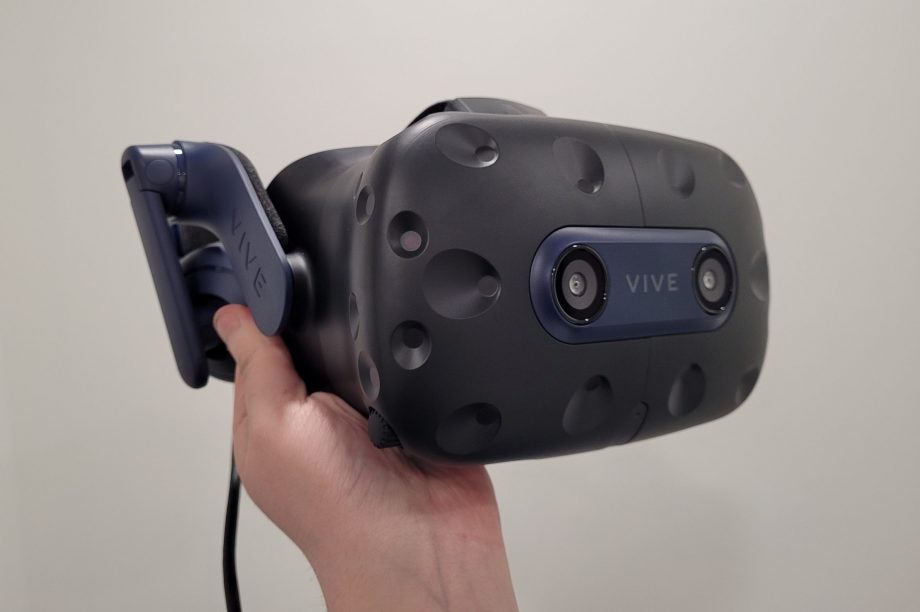
Photo credit: trustedreviews.com
The HTC Vive offers a truly amazing high-end VR experience. The kit price which includes the knuckles and base stations is $1,399, but you can buy the headset alone if you own the other gear for a reduced $749. Still very expensive for most and only intended for those with a serious passion for the medium.
That said, it is a very premium experience. A resolution of 2448×2448 per eye and a refresh rate of 120Hz allows for some amazing gaming experiences. The field of view is also excellent at 120 degrees. Similar to most VR experiences you will need a modern beefy PC to get the most out of the Vive, and being tethered to your PC restricts you in ways that the Quest 2 or Pico 4 doesn’t.
Support from SteamVR is excellent though and for me, the Vive knuckle controllers are still the best on the market at the moment. The screen door effect on the headset is all but non-existent and the consistent image quality with a steady refresh rate leads to some of the best gaming experiences that money can buy.
The design quality is something I have not mentioned for any other headset but I’d be remiss not to mention it here. The design and overall aesthetic are beautiful and the result is that you get a premium-quality headset in your hands. From the padding to the strap and headphone options, HTC tries to cater to everyone. If you have the money to spend and a high-end PC, then this is a perfect choice.
Pros
- Premium build
- Amazing resolution and refresh rate
- Good library of quality games
- Best controllers
Cons
- Very expensive
- High-end PC needed
- Still tethered
Pimax Vision 8K X ( PCVR)
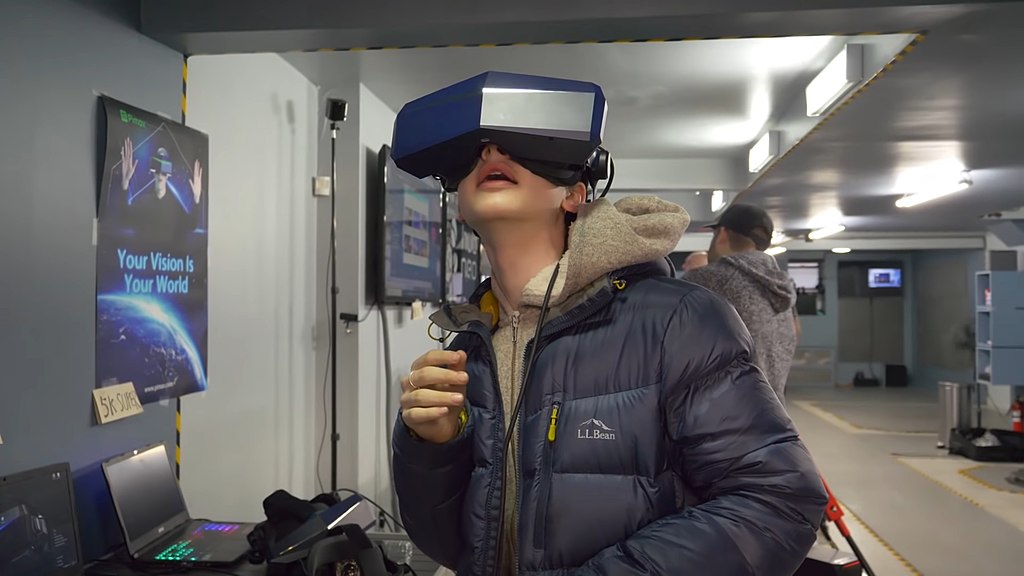
Photo credit: Wikimedia Commons
Okay, so now we are getting into pure enthusiast territory and you need deep pockets to justify a purchase here. The price of the headset alone is $1299, and you will need to add $499 for a Vive kit (knuckles and base stations).
Pimax has always pushed the envelope on what can be achieved and here is no different. The specs are hard to quantify which I’ll get into in a minute but on paper, the resolution maxes out at 3840×2160 per eye and the refresh rate can be as high as 114Hz. One of the best offerings on this list.
The display itself offers amazing clarity but sometimes at a cost and the colors are better than any I have seen anywhere else. The variable specs mentioned balance off each other, it seems you can max out resolution but the refresh rate is reduced and vice versa. It’s difficult to find the right balance and to further complicate things, different games will change settings automatically.
However, this may be a wanted feature for many experienced users because the range of settings and color options on offer can lead to hours of tinkering to achieve the experience that suits you. It’s the kind of VR headset that invites enthusiasts to really get under the hood and play around with it.
One thing you can’t change and wouldn’t want to is the amazing field of view. Pimax has grown famous for having an amazing field of view with all their units and here we have 200 degrees. This means no matter how far you move your eyes, you’ll never see the edge of the screen or the “goggle effect” as I call it.
The price is off-putting for anyone other than those passionate about VR and I think that’s the point. Pimax wants you to tailor your VR experience and you’ll need a rather powerful modern gaming PC to get the most out of this headset. If you have the money and a powerful PC, you won’t find a better VR experience on the market.
Pros
- Amazing resolution
- Widest field of view on offer
- Comprehensive settings
- Amazing overall VR visuals
Cons
- Requires high-end PC
- Very expensive
- Settings may be off-putting to some
- Costs even more to add kit
Meta Quest Pro (Stand-Alone)
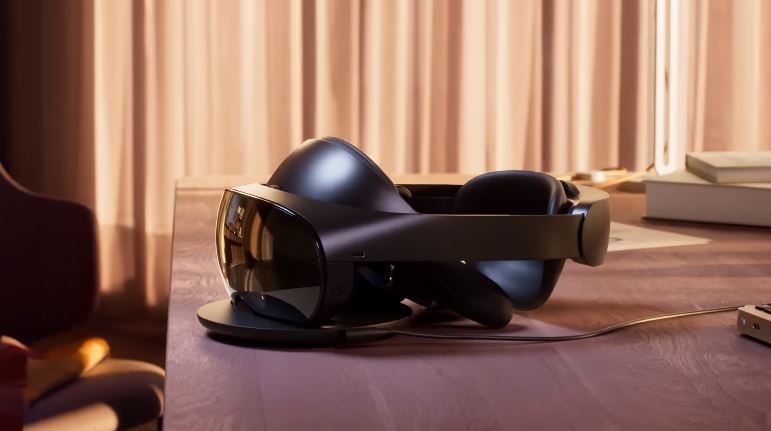
Photo credit: Meta Quest Official YouTube Channel
Meta Quest Pro is now officially on sale for the eye-watering price of $1,499.99 in the US. For this large stack of cash, you get the stand-alone headset, a stylus, partial light blockers, new pro touch controllers, and a charging dock. The new device takes full advantage of the Snapdragon XR2, which has been seen in some of the most recent cell phone devices.
The power of this processor offers new levels of immersion not yet seen on a stand-alone device. The headset uses new pancake lenses which allows for a smaller form factor and also takes advantage of full-color pass making it a perfect tool for both AR and VR experiences.
The new touch controllers are quite impressive too. They have three built-in sensors in each controller to track their position in 3D space independent of the headset, giving you a full 360-degree range of motion.
This ensures stable tracking across all of your VR apps and means they’ll work even if obscured. They are also sold separately so if you have an older headset and still want to experience this new tech, you can pick up a pair of pro touch controllers for $299.
The included charging dock is a nice bonus as it charges both the headset and the controllers making it a neat holder that covers your charging needs. The rest of the Meta Quest Pro stats are also really impressive, check them out:
- Storage 256GB
- RAM 12GB
- Processor Snapdragon XR2+
- Optics 3 x cameras
- Sensors 10 x VR/MR sensors
- Connectivity USB C (power), 2 x Meta Quest Touch Pro controllers
- IDP Range 55-75mm
- Horizontal FoV 106°
- Diagonal FoV 96°
- Resolution per eye 1800 x 1920
- Refresh Rate 90Hz / 72Hz
- Tracking Eye, Face, and Hand
- Lens-type Pancake
The stand-out tech here is the new pancake lenses, the impressive field of view, and the full-color pass-through. The standard 90Hz refresh rate is a little disappointing and of course, the high price tag will be off-putting for most.
This headset should not be ignored though because it is currently the most powerful stand-alone headset on the market. Yes, the price is high but there are no extra expenses for a PC or a console, or even other sensors/base stations.
You can play right out of the box and for VR enthusiasts, this might be the best deal you’ll find in 2022. An ideal Christmas Gift for those willing to spend a little extra.
Varjo Aero (PCVR)
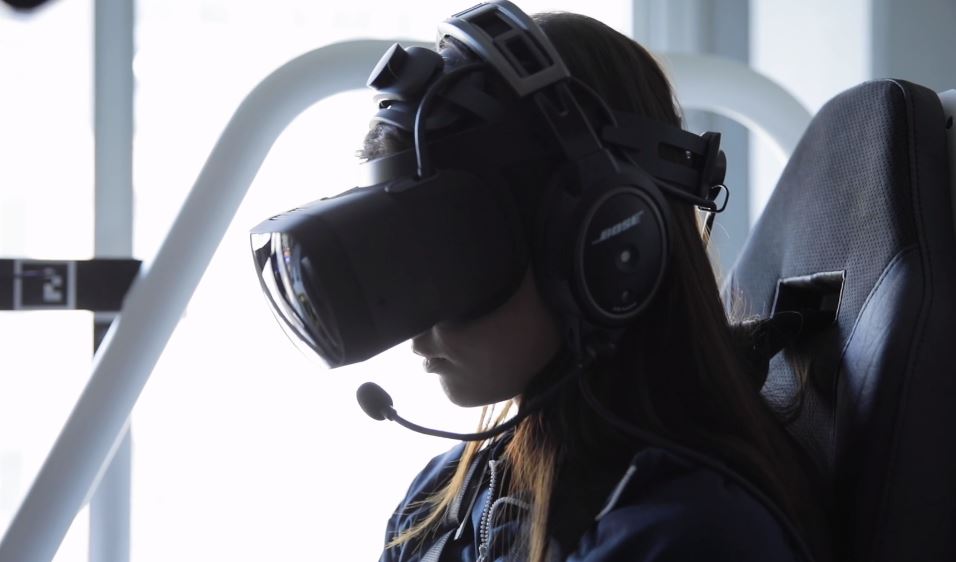
Photo credit: https://varjo.com/
So you might be thinking that the Valve Index or the Pimax is top tier when it comes to price and quality but you’d be mistaken. There’s one headset that sits above them all thanks to its crystal clear resolution and ridiculously high sales price!
For the rather princely sum of $1,990 you can get your hands on one of the most state-of-the-art headsets ever designed! No headphones or base stations or even controllers! You just get the headset for shy of two grand! However, it’s what’s under the hood that adds such a high price tag. Let’s take a look at the specs:
- DISPLAYS Dual Mini LED LCD; 2880 x 2720 px per eye
- Brightness: Calibrated to 150 NIT
- Colors: Calibrated with coverage of 99% sRGB, 95% DCI-P3
- Refresh rate: 90 Hz
- OPTICS Custom-made variable resolution aspheric lenses with 35 PPD peak fidelity
- Edge-to-edge clarity; no reflections, no ghost rays
- FIELD OF VIEW Horizontal: 115°
- Diagonal: 134° at 12 mm eye relief
- IPD Automatic IPD adjustment with motor
- IPD range: 57–73 mm
- AUDIO 3.5 mm audio jack
- In-ear headphones with mic in-box
- WEIGHT 487 g + headband 230 g (including counterweight)
- DIMENSIONS Width 200 mm, height 170 mm, length 300 mm
- CONNECTIVITY Headset adapter and USB-C cable (5-meter) in-box
- PC connections DisplayPort and USB-A 3.0
- EYE TRACKING 200 Hz with sub-degree accuracy; 1-dot calibration for foveated rendering
- COMFORT 3-point precision fit headband
- Replaceable, easy-to-clean polyurethane face cushions
- Active cooling
The out-of-this-world eye-tracking 200Hz refresh rate is enough to bring Varjo to the top of the pile. There is simply no better VR experience currently on the market. Sure the price is eye-watering but this is not a headset for casual gamers or hobbyists. The Varjo offers crystal clear resolution that was designed with businesses and manufacturers in mind.
Delivering high-end tutorials or creating VR simulations for industries including car manufacturing, engineering, and even surgery in mind. The idea is to give the user an almost life-like experience and this comes at a high cost to your pocket. This most definitely is not for everyone but if you happen to have a crazy expensive PC lying around and a few extra dollars to the tune of 2,000 in your pocket then maybe you want to check this out. Once you’ve experienced VR through these lenses, you’ll never settle for anything less.
Overall – How Much Does It Cost To Get A VR Headset?
The answer is simple, as expensive as you want it to be. If you’re a day one adopter and simply must have the best there is, then you’ll be paying $1,000s for the latest and greatest PCVR.
If you’re more cautious and want a decent gaming experience with minimal fuss then you’re looking at around $500 with the Pico 4 or Quest 2 as being high quality balanced with affordability. The prices and the quality vary so realistic it will cost whichever amount you are willing to pay!
